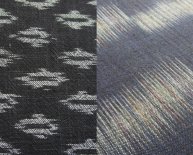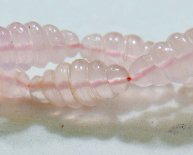
Spandex fiber characteristics
 |
| Spandex Fiber |
Physical Properties of Spandex Fiber:
1. Cross section- Spandex filaments are extruded usually from circular orifices, but the evaporation of solvent or the effects of drying may produce non-circular cross-sectional shapes. This may take various forms. In the multi-filament yarns, individual filaments are often fused together in places. The number of filaments in a yarn may be as few as 12 or as many as 50;the linear density of filaments ranges from 0.1 to 3 tex (g/km).
2. Density: The density of spandex filaments ranges from 1.15 to 1.32 g/cc, the fibres lower density being based on polyesters.
3. Moisture regain: The moisture of fibres from which the surface finish has been removed lies between 0.8 & 1.2%
4. Length: It can be of any length. May be used as filament or staple fibre
5. Colour: It has white or nearly white colour.
6. Luster : It has usually dull luster.
7. Strength: Low strength compared to most other synthetic fiber.
8. Elasticity: Elastic properties are excellent. This is the outstanding characteristic of the fibre.
9. Heat: The heat resistance varies considerably amongst the different degrades over 300 F.
10. Flammability: It Burn slowly.
11. Electrical conductivity: It has Low electrical conductivity.
12. Breaking tenacity: 0.6 to 0.9grams/denier.
Chemical Properties of Spandex Fiber:
1. Acid: Good resistance to most of acids unless exposure is over 24 hours.
2. Alkalies: Good resistance to most of the alkalies, but some types of alkalies may damage the fibre.
3. Organic solvents: Offer resistance to dry cleaning solvents.
4. Bleaches: Can be degreaded by sodium hypochloride. chlorine bleach should not be used.
5. Dyeing: A full range of coloures is available. Some types are more difficult to dye than others.
















